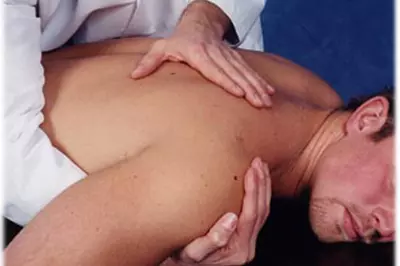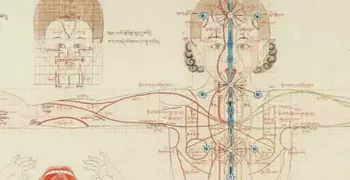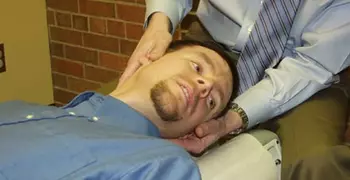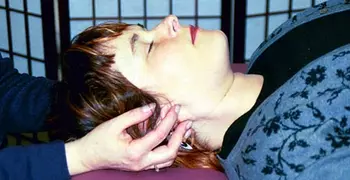Osteopathic Medicine

 Osteopathic medicine (which is referred to as osteopathy when practiced by osteopaths trained outside the United States) is not a modality, but rather a system of healthcare. It considers the whole body and focuses on preventive care. The osteopathic concept is essentially that any observable alteration in the normal anatomy is a sign that disease is present and that correction of this abnormality would resolve or improve the disease's effects.
Osteopathic medicine (which is referred to as osteopathy when practiced by osteopaths trained outside the United States) is not a modality, but rather a system of healthcare. It considers the whole body and focuses on preventive care. The osteopathic concept is essentially that any observable alteration in the normal anatomy is a sign that disease is present and that correction of this abnormality would resolve or improve the disease's effects.
Thus, osteopathic medicine is first and foremost a philosophy. The manual approaches and techniques that are used in the application of this philosophy are extremely varied. There are really no "osteopathic techniques," but rather numerous manual approaches and techniques that were developed by osteopathis physicians and are applied from an osteopathic perspective. Generally, the free normal flow and actions of nerves, arteries, veins, lymphatics, and cerebrospinal fluid are addressed in an osteopathic evaluation and treatment.
A visit to an osteopathic physician (DO) can be much like a visit to a traditional MD, with some exceptions. Since DOs take a holistic approach to working with patients, a DO may ask the client about his or her physical condition and lifestyle. A hands-on physical examination is also conducted. One technique, Osteopathic Manipulative Treatment (OMT), involves the use of the DO's hands to diagnose injury and illness, giving special attention to the joints, bones, muscles, and nerves.
How can osteopathic medicine benefit your health and wellbeing?
Because osteopathic medicine is a healthcare system rather than a modality, its uses and applications are varied. Generally, many patients initially seek osteopathic care for aches, pains, strains, sprains, headaches, and other common musculoskeletal problems.
However, since there are numerous evaluation and manual treatment approaches, many health problems can be and have been successfully addressed with osteopathic manipulation. Studies have shown positive effects with the following conditions:
- Arthritis
- Asthma
- Autism
- Bell's palsy
- Degenerative disc and joint disease
- Ear infections
- Epilepsy
- Fibromyalgia
- Irritable bowel syndrome
- Migraines
- Pain
- Pregnancy and childbirth
- Reflux
- Tendonitis
- TMJ
There are few, if any, absolute contraindications to osteopathic manipulation, however, it is important for both the osteopathic physician and the client to use common sense. Osteopathic manipulative treatment itself has no potential side effects other than temporary soreness for a day or two after therapy.
You should generally avoid vigorous types of manipulation (for example, thrust-type maneuvers or lymphatic pumps) if you have certain conditions, such as bone cancer, bone or joint infection, or severe osteoporosis, as it could cause trauma to the bone or internal organs. Otherwise, almost any person can potentially benefit from osteopathic evaluation and treatment.
What does the research show?
Issues of controls, blinded studies, and "sham" manipulation represent research challenges. Also, funding and obtaining large population studies have been ongoing issues since the beginning of the profession.
Traditionally, research in osteopathic manipulation has been in small studies, but has often shown positive results and promise as an intervention for patients in both outpatient and inpatient scenarios. Additionally, children and the elderly seem to be significant populations that can benefit from osteopathic manipulative treatment.
Where can I find a practitioner?

Osteopathic physicians complete a four-year training program followed by an internship and usually a residency. In the U.S., there are state, national, and specialty licensing and examination requirements. For osteopaths trained outside the U.S., there are varying levels and requirements of training, examination, and licensing.
U.S.-trained and licensed DOs can practice in all medical specialties, prescribe medicine, and perform surgery.
The World Osteopathic Health Organization is attempting to standardize regulation of osteopathic manipulative medicine. However, this organization is in its infancy and any substantial standardization is a long way off.
If you are seeking an osteopathic physician as your primary-care provider, begin by looking for a board-certified practitioner. Referrals from other physicians or your local medical association can help point you in the right direction. Friends and family members who have worked with an osteopath are also good sources for referrals. It's also good practice to arrange an initial appointment to see if you are comfortable with a particular DO's personality and style of practice.



























